北京动物园水禽馆,北京,中国
北京动物园水禽馆,北京,中国
Waterfowl Pavilion of Beijing Zoo, Beijing, China, 2013
建筑设计:宋晔皓,王丽娜,孙菁芬,解丹/北京清城华筑建筑设计研究院有限公司
Architects: SONG Yehao, WANG Lina, SUN Jingfen, XIE Dan/Beijing THCA Architectural Design and Consulting Institute Co., Ltd.
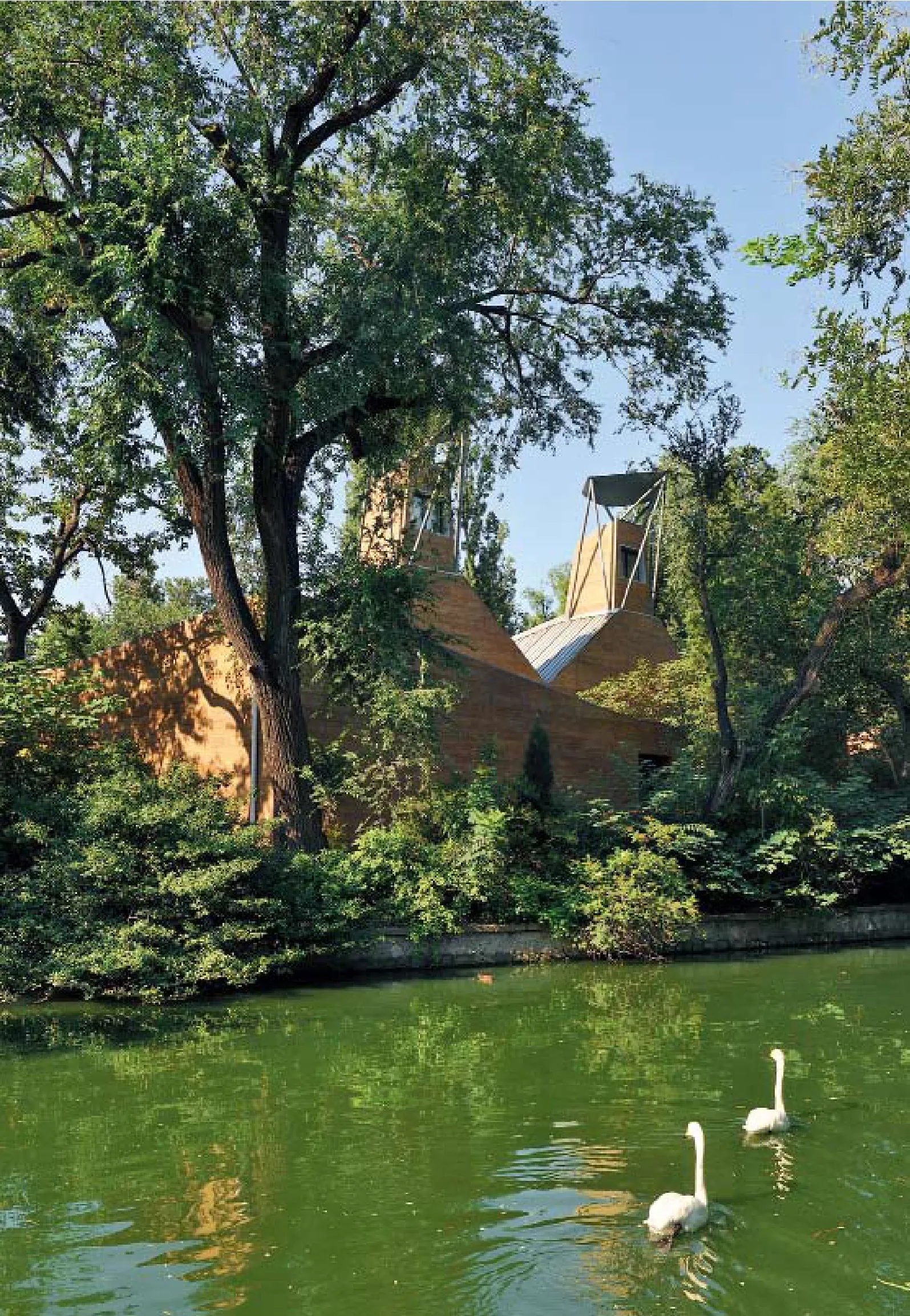
1 水禽湖东北角景观/Northeast view form the lake
北京动物园水禽馆不仅是供热带和亚热带水禽栖息和科普展陈的复合展馆,还是一个公益建筑的设计建造范例,也是立足于中国北方寒冷地区、从建筑学出发的基于可持续设计策略研究的实验平台。在项目筹划阶段就明确可持续设计的目标:即在有限的建造经费内,借助建筑师的义务设计和赞助商捐助的部品,实现一座以“零能零碳”为目标的微能耗示范建筑。
水禽馆的设计过程遵循从规划布局,到建筑设计,再到细部设计的逐层深化的顺序,不断强调建筑在环境中的“消隐”。
视觉形象消隐: 动物园水禽岛上植被丰饶,生物多样性极高,在这样的场地中所“植入”的建筑,必须与自然交融,形成视觉效果上的“消隐”。
环境影响消隐: 水禽岛实际上是一个相对独立且完整的小生态系统,使建筑融入其中,并实现对环境的最小干扰,是“消隐”的深层含义。故建筑在选址上考虑最小侵扰;在景观上采用当地植被;在建筑结构、材料和建造方式的选择上减少碳排放,以实现全生命周期的碳平衡。
项目信息/Credits and Data
客户/Client: 北京市动物园/Beijing Zoo
设计团队/Project Team: 宋晔皓,王丽娜,孙菁芬,解丹,陈晓娟,白一凡,林正豪,李珺杰;清华同衡(合作工程设计)/SONG Yehao, WANG Lina, SUN Jingfen, XIE Dan, CHEN Xiaojuan, BAI Yifan, LIN Zhenghao, LI Junjie; THUPDI (Collaborators)
建筑面积/Floor Area: 335m²
设计时间/Design Period: 2011.05-2013.11
摄影/Photos: 宋晔皓,孙菁芬/SONG Yehao, SUN Jingfen

2 总平面/Site plan

3 东南角/Exterior view from southeast

4 场地剖面/Site section
The Waterfowl Pavilion of Beijing Zoo is not only a composite exhibition building of tropical and sub-tropical waterfowls but also an example of the architectures for public services. It is located in the cold area in Northern China and serves as an experimental platform for research on sustainable design strategies from architectural viewpoints. At the initial stage of project, sustainability was clearly defined as the target, i.e. to construct a net-zero building under limited budget with the voluntary design of the architects and the items donated by the sponsors.
The design followed the sequence from layout planning to architectural design, going deeper and deeper into details, with an emphasis on the disappearing of architecture into its environment.
Firstly, the invisibility of visual image: The waterfowl island has a rich variety in plants and living organisms. To "transplant" architecture into such a place means that it must blend perfectly with nature to achieve invisibility in visual effect.
Secondly, the invisibility of environmental impact: The waterfowl island is in fact a complete and relatively independent ecosystem. The deeper meaning of invisibility refers to the integration of architecture into the island with minimum interferences in its environment. Accordingly, minimum interference was considered in site selection; local plants were chosen for the landscape; efforts to reduce carbon emission were made in the selection of architectural structure, materials and way of construction. All was done to achieve a carbon balance of a complete life cycle.
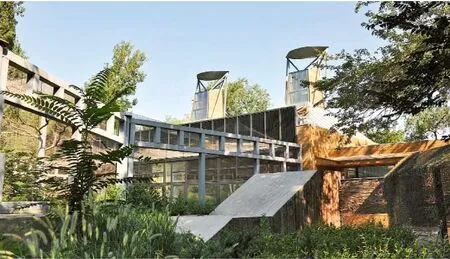
5 南侧生态景观/Ecological view from the south
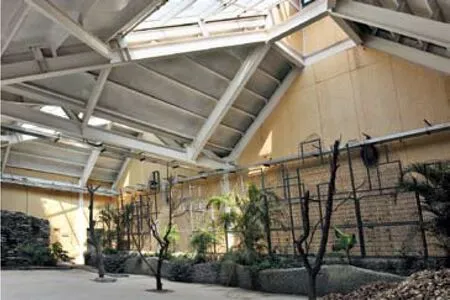
6 鸟舍室内/Interior view
评委评语
本项目不仅运用多种技术方式和材料建立起一个相对独立完整的小生态系统,实现了微能耗建筑的目标,同时精心选择建造场地,采用得体的建筑形式,达到了建筑与环境的呼应交融的状态。
Jury Statement
By using various technical means and materials, this project creates a relatively independent and complete small ecosystem with low energy consumption. In addition, through careful site selection and proper architectural form, harmony between the Pavilion and its environment is also achieved.

7 横剖透视/Perspective cross section
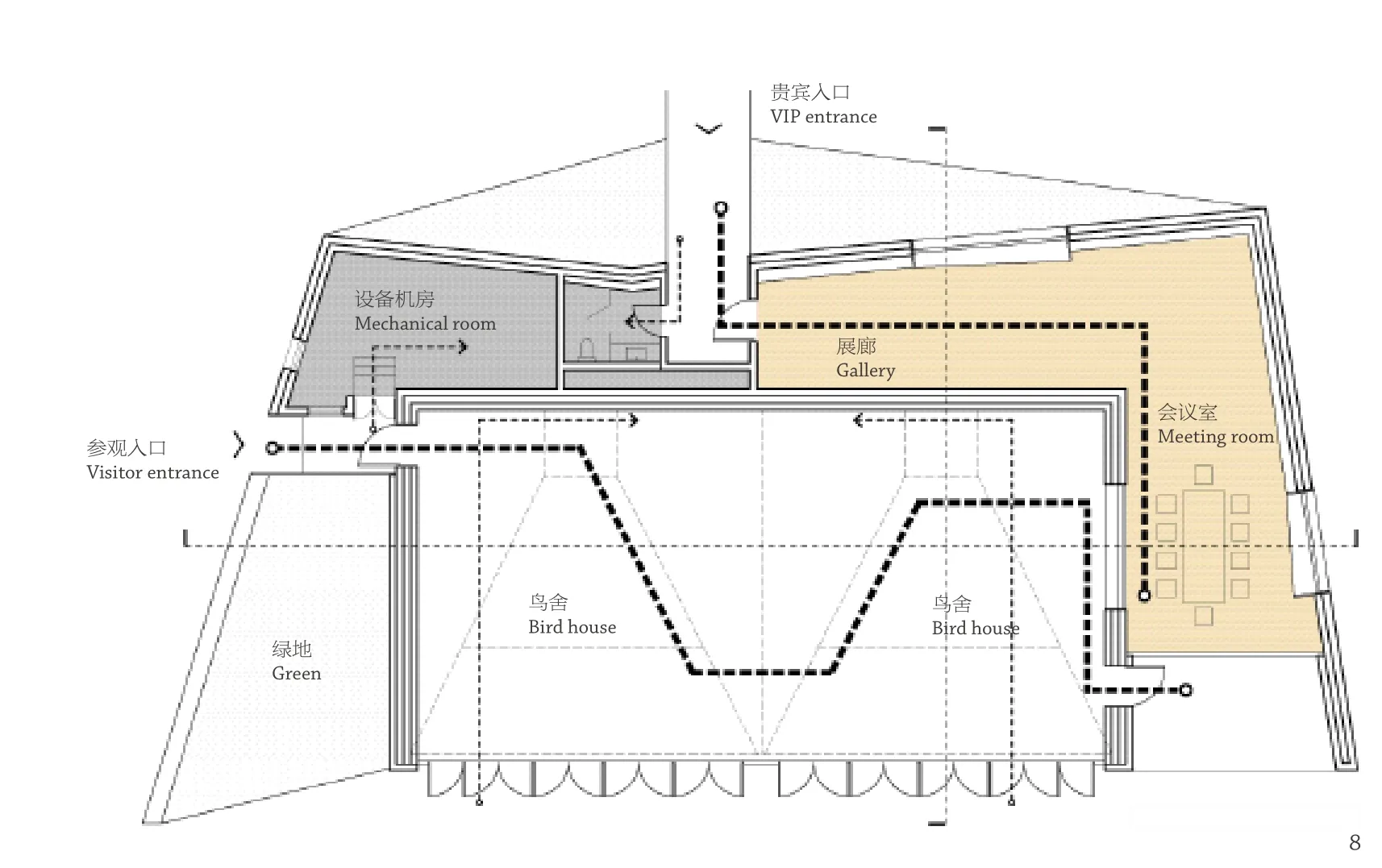
8 首层平面/Floor 0 plan
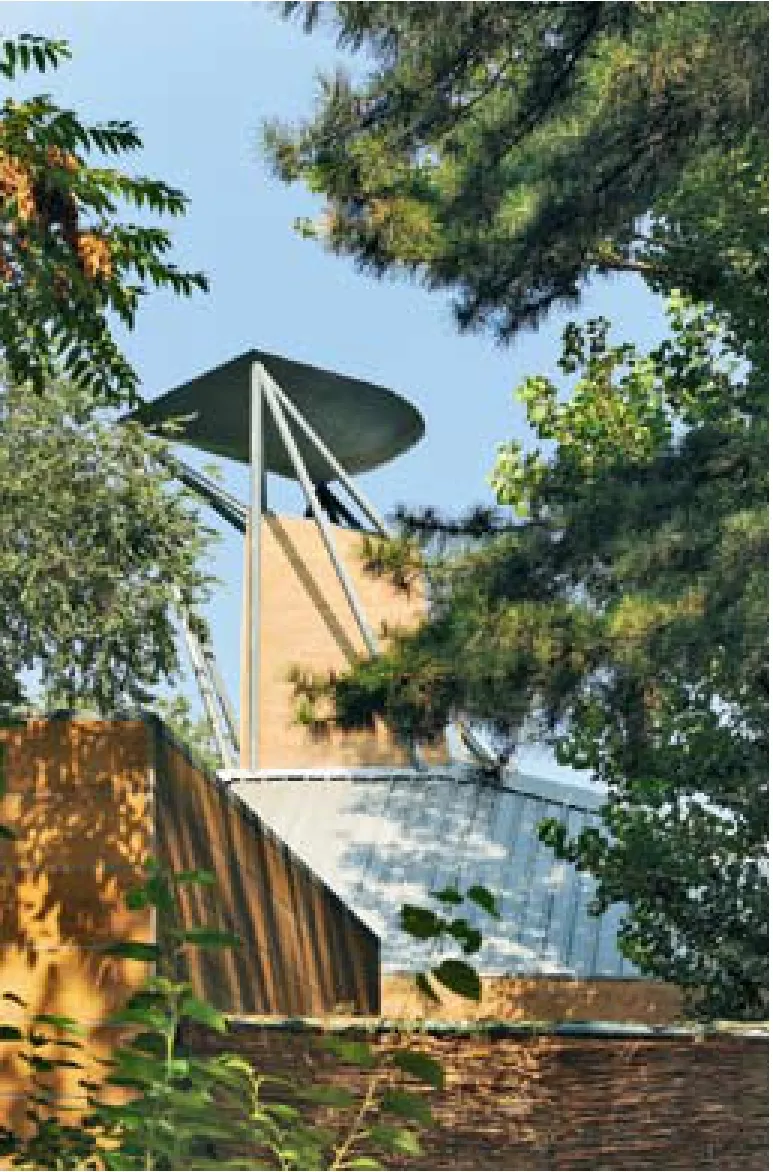
9 西南特写/Exterior view from southwest
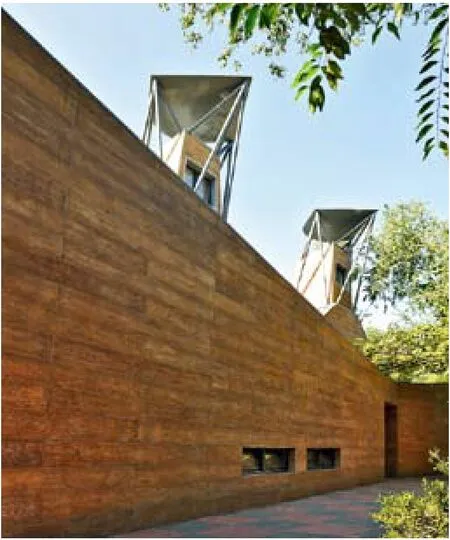
10 北侧天际线/The skyline from the north

